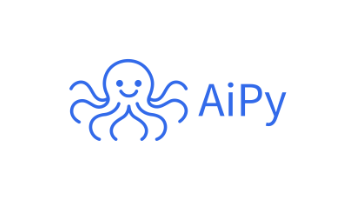Datawhale AI夏令营
AI生成图像在所有频率上都具有“分散的强度”,这意味着其傅里叶变换后的能量在整个频谱范围内分布较为均匀。相比之下,真实图像的强度则主要集中在中心频率,即能量主要集中在低频部分,反映出图像中平滑的过渡和整体结构。此外,真实照片通常被描述为“混乱、无序和不平衡”的,它们捕捉了现实世界中固有的复杂性和随机性。结合CNN和循环神经网络(RNN,例如LSTM)的模型,可以捕捉视频中人脸运动、表情变化等时序上
全球AI攻防挑战赛图像生成赛道task3笔记
一、调整 Prompt
对于模型来说可能英文的prompt生成效果更准确、更稳定,我们可以将prompt翻译成英文
prompt的分布
语言分布统计
| 类别 | 数量 | 占比 |
| 纯中文 | 156 | 15.60% |
| 纯英文 | 531 | 53.10% |
| 中英混合 | 63 | 6.30% |
| 总计 | 750 | 75% |
长度分析(字符数)
| 类别 | 最短长度 | 最长长度 | 平均长度 |
| 纯中文 | 4 | 54 | 27.4 |
| 纯英文 | 14 | 122 | 45.7 |
| 中英混合 | 6 | 85 | 30.8 |
翻译prompt的注意事项
1.vittie任务中prompt中含有" "括着的部分不要翻译
- eg: 帮我把“致青春”改成“致少年” 因为文中是将图中的“致青春”这三个汉字换成“致少年”
2.prompt有繁体字
-
eg:請把車子外面的那個女人移除掉,其它東西的要保留,再重新輸出給我圖片
3.含有中国风/文化专属元素的用中文,意境传达更直接
- eg:变成水墨画风格
也可以增加负面提示词(Negative Prompt)来限制
二、调用Qwen-Image
pip install git+https://github.com/huggingface/diffusersfrom diffusers import DiffusionPipeline
import torch
model_name = "Qwen/Qwen-Image"
# Load the pipeline
if torch.cuda.is_available():
torch_dtype = torch.bfloat16
device = "cuda"
else:
torch_dtype = torch.float32
device = "cpu"
pipe = DiffusionPipeline.from_pretrained(model_name, torch_dtype=torch_dtype)
pipe = pipe.to(device)
positive_magic = {
"en": "Ultra HD, 4K, cinematic composition." # for english prompt,
"zh": "超清,4K,电影级构图" # for chinese prompt,
}
# Generate image
prompt = '''A coffee shop entrance features a chalkboard sign reading "Qwen Coffee 😊 $2 per cup," with a neon light beside it displaying "通义千问". Next to it hangs a poster showing a beautiful Chinese woman, and beneath the poster is written "π≈3.1415926-53589793-23846264-33832795-02384197". Ultra HD, 4K, cinematic composition'''
negative_prompt = " " # using an empty string if you do not have specific concept to remove
# Generate with different aspect ratios
aspect_ratios = {
"1:1": (1328, 1328),
"16:9": (1664, 928),
"9:16": (928, 1664),
"4:3": (1472, 1140),
"3:4": (1140, 1472),
"3:2": (1584, 1056),
"2:3": (1056, 1584),
}
width, height = aspect_ratios["16:9"]
image = pipe(
prompt=prompt + positive_magic["en"],
negative_prompt=negative_prompt,
width=width,
height=height,
num_inference_steps=50,
true_cfg_scale=4.0,
generator=torch.Generator(device="cuda").manual_seed(42)
).images[0]
image.save("example.png")
三、调用 FLUX.1-Kontext-dev
# Install diffusers from the main branch until future stable release
pip install git+https://github.com/huggingface/diffusers.gitimport torch
from diffusers import FluxKontextPipeline
from diffusers.utils import load_image
pipe = FluxKontextPipeline.from_pretrained("black-forest-labs/FLUX.1-Kontext-dev", torch_dtype=torch.bfloat16)
pipe.to("cuda")
input_image = load_image("https://huggingface.co/datasets/huggingface/documentation-images/resolve/main/diffusers/cat.png")
image = pipe(
image=input_image,
prompt="Add a hat to the cat",
guidance_scale=2.5
).images[0]
四、AI图片识别方法
Identify if image has watermark using AI | Nyckel
AI生成图像与真实图像在频率分布上存在显著差异。AI生成图像在所有频率上都具有“分散的强度”,这意味着其傅里叶变换后的能量在整个频谱范围内分布较为均匀。相比之下,真实图像的强度则主要集中在中心频率,即能量主要集中在低频部分,反映出图像中平滑的过渡和整体结构。
此外,真实照片通常被描述为“混乱、无序和不平衡”的,它们捕捉了现实世界中固有的复杂性和随机性。而AI图片则可能因为其源自均匀随机噪声并经过逐步细化生成,而显得过于“平坦”或缺乏真实图像固有的复杂噪声特征。
通过CNN等二分类模型,可以将图片进行判断,是否为AI生成。
https://huggingface.co/umm-maybe/AI-image-detector
https://huggingface.co/mmanikanta/VIT_AI_image_detector
五、DeepFake识别方法
结合CNN和循环神经网络(RNN,例如LSTM)的模型,可以捕捉视频中人脸运动、表情变化等时序上的不自然之处。例如,一些模型可以识别不自然的头部姿势变化或异常的眨眼模式。
https://huggingface.co/prithivMLmods/Deep-Fake-Detector-v2-Model
https://huggingface.co/dima806/deepfake_vs_real_image_detection
更多推荐
 已为社区贡献2条内容
已为社区贡献2条内容









所有评论(0)